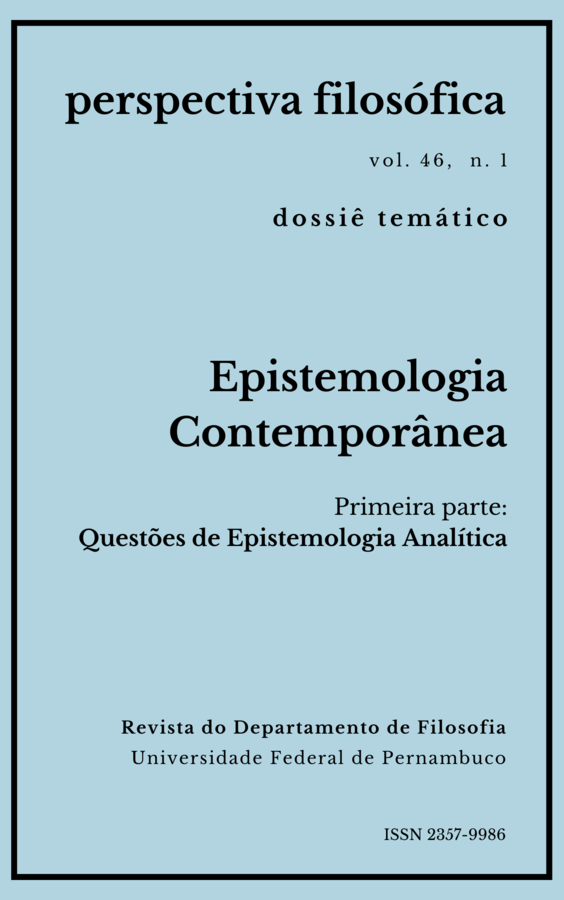Demonstração, Verdade e Entendimento no conhecimento matemático: um estudo de caso a partir do Teorema das Quatro Cores
DOI:
https://doi.org/10.51359/2357-9986.2019.247940Keywords:
mathematical knowledge, proof, validity, understandingAbstract
In this paper, I argue that mathematical knowledge is not reduced to a collection of proved and verified (hence, true to all practical matters) theorems. I defend that the ideas of mathematical understanding and mathematical explanation are essential not only to mathematical practice and heuristics but also to the very foundations of the discipline. To accomplish that, I examine the classic Appel-Haken proof of the Four-Color Theorem and discuss it from a philosophical perspective, taking on account the rich literature on the topic. The Four-Color Theorem was one of the first original theorems to be proved with considerable help from computational machinery, employed for performing exhaustive case checking, and that was responsible for encouraging a relevant discussion on several topics of mathematical epistemology.References
AVIGAD, Jeremy. Computers in Mathematical Inquiry. In: MANCOSU,Paolo (Ed.). The Philosophy of Mathematical Practice.Oxford: OxfordUniversity Press, 2008.
AVIGAD, Jeremy. Understanding Proofs In: MANCOSU, Paolo (Ed.). ThePhilosophy of Mathematical Practice.Oxford: Oxford University Press,2008.
BRAVACO, Ralph; SIMONSON, Shai. Data Structures and DiscreteMathematics Learning Community:Lab. 3. Disponível em: <http://web.stonehill.edu/compsci/lc/four-color/four-color.htm>. Acesso em:20 set. 2015.
BUENO, Otávio. Styles of reasoning: a pluralist view. Studies In HistoryAnd Philosophy Of Science Part A, [s.l.], v. 43, n. 4, p. 657-665, dez. 2012.
GIAQUINTO, Marcus. Visualizing in Mathematics in: MANCOSU, Paolo(Ed.). The Philosophy of Mathematical Practice.Oxford: Oxford UniveristyPress, 2008.
GONTHIER, Georges. A computer-checked proof of the Four ColorTheorem. Microsoft Research Cambridge Disponível em:<http://research.microsoft.com/en-US/people/gonthier/4colproof.pdf>.Acesso em: 16 set. 2015.
HARDY, G. H. Em Defesa de um Matemático. São Paulo: Martins Fontes.2000.
HERSH, Reuben. What is Mathematics, Really?.Oxford: Oxford UniveristyPress, 1997.
KRIPKE, Saul A. Naming and necessity. Malden: Blackwell, 1972.
LAKATOS, Imre; WORRAL, John (Ed.); ZAHAR, Elie (Ed.). Proofs andRefutations:The Logic of Mathematical Discovery. Cambridge: CambridgeUniversity Press, 1977.
MANCOSU, Paolo, Explanation in Mathematics, The StanfordEncyclopedia of Philosophy (Summer 2015 Edition), Edward N. Zalta(ed.),URL=<http://plato.stanford.edu/archives/sum2015/entries/mathematics-explanation/>.
MANCOSU, Paolo (Ed.). Mathematical Explanation: Why it Matters. In:MANCOSU, Paolo. The Philosophy of Mathematical Practice.Oxford:Oxford Univeristy Press, 2008.
NOVAES, Catarina Dutilh. Mathematical Reasoning and External SymbolicSystems. Logique & Analyse. v. 221, p. 45-65, 2013.
PÓLYA, Georg. Induction and Analogy in Mathematics. Princeton:Princeton University Press, 1954.
PYLYSHYN, Zenon. Seeing and Visualizing: it's not what you think.Cambridge (ma): MIT Press, 2003.
SECCO, Gisele Dalva. Computadores nas práticas matemáticas: umexercício de micro história. O Que nos Faz Pensar, Rio de Janeiro, v. 39, n.25, p. 105-122, jul. 2016.
SECCO, Gisele Dalva. Proofs Versus Experiments: wittgensteinian themessurrounding the four-color theorem. In: SILVA, Marcos (ed.). How coloursmatter to Philosophy. Cham: Springer, 2017.
STEINER, M., Mathematical Explanation. Philosophical Studies, v. 34, pp.135–151, 1978.
SWART, E. R. The Philosophical Implications of the Four-Color Problem.The American Mathematical Monthly. v. 11, pp. 697-707, 1980.
THURSTON, William P. On Proof and Progress in Mathematics. Bulletin ofThe American Mathematical Society, v. 2, n. 30, p.161-177, abr. 1994.
TYMOCZKO, Thomas. The Four-Color Problem and Its PhilosophicalSignificance. In: TYMOCZKO, Thomas. New Directions in thePhilosophy of Mathematics.Princeton: Princeton University Press, 1998.
LAUDAN, Larry. A confutation of convergent realism. Philosophy ofScience. Chicago, v.48, n.1, p.19-49, mar. 1981.
WALTERS, Mark. It Appears That Four Colors Suffice: A HistoricalOverview of the Four-Color Theorem. New York: MAA, 2004.
WILSON, Robin; STEWART, Ian. Four Colors Suffice:How the MapProblem Was Solved. Princeton, Nj: Princeton University Press, 2013.
Downloads
Published
Issue
Section
License
A Revista Perspectiva Filosófica orienta seus procedimentos de gestão de artigos conforme as diretrizes básicas formuladas pelo Conselho Nacional de Desenvolvimento Científico e Tecnológico (CNPq). http://www.cnpq.br/web/guest/diretrizesAutores que publicam nesta revista concordam com os seguintes termos:
Os autores mantém os direitos autorais e concedem à revista o direito de primeira publicação, sendo o trabalho simultaneamente licenciado sob https://creativecommons.org/licenses/by/4.0/deed.pt_BR que permite o compartilhamento do trabalho com reconhecimento da autoria e publicação inicial nesta revista.
Os autores têm autorização para assumir contratos adicionais separadamente, para distribuição não-exclusiva da versão do trabalho publicada nesta revista, com reconhecimento de autoria e publicação inicial nesta revista (Consultar http://opcit.eprints.org/oacitation-biblio.html).

Esta revista está licenciada com uma Licença Creative Commons Atribuição 4.0 Internacional.













